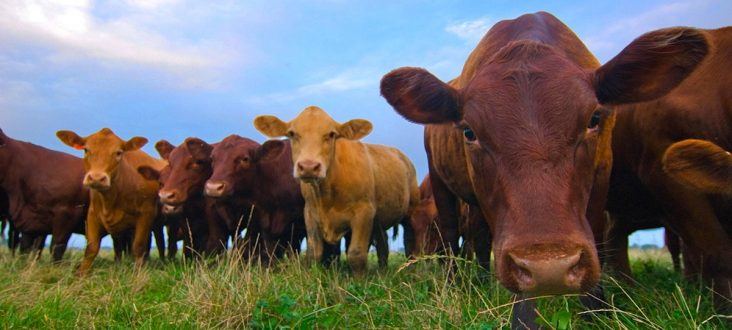Spring cattle numbers look strong despite weather impact
by March 26, 2019 1:00 am 552 views

Harsh winter weather across the country from heavy snow to flooding throughout the Midwest continues to cause disruptions in the cattle industry. That said, the March 1 feedlot inventory was 11.796 million head, 100.7% of a year ago and the largest March on-feed inventory since 2008, according to Derrell Peel, livestock marketing specialist at Oklahoma State University.
Peel said over the past 12 months the average feedlot inventory was 11.529 million head, the largest 12-month moving average since January 2000. For the last twelve months, feedlot inventories have averaged 11.1% higher than the annual average of the October 2014 low.
He said March weather combined with previous winter conditions continue to create uncertainty about cattle market conditions.
“The long cold winter has been characterized by persistent and deep snow in some places and wet, sloppy conditions in others. Now floods are devastating large regions along the Mississippi and Missouri river basins with additional flooding expected. The impacts on crop and livestock markets are likely to be felt for many weeks and months to come,” Peel said.
On the crop side, losses of stored grain, hay and other products will have immediate impacts on the producers affected and perhaps on broader markets. Disruptions to transportation may be the biggest impact with truck, rail and river transportation all impacted by the floods and associated damage and likely to be affected for weeks ahead.
Peel said the cattle and beef markets are being impacted with lower fed cattle weights, lost performance and increased animal morbidity and mortality. He added the timing of the recent floods are “particularly insidious” given that it is calving season for many cow-calf operations.
“This is likely to result in cattle losses even greater than would be expected during floods. It will take many weeks to fully assess the cattle losses due to winter weather and the floods,” Peel said.
Boxed beef cutout values have remained high throughout the first quarter of this year. Fed (steer and heifer) slaughter is down fractionally year-over-year, and carcass weights are lighter which is expected to reduce overall beef production by 1.4% this year.
He said fed cattle prices have pushed higher seasonally and may see an extended opportunity for a spring peak given the on-going weather impacts.
